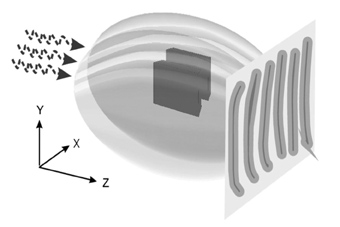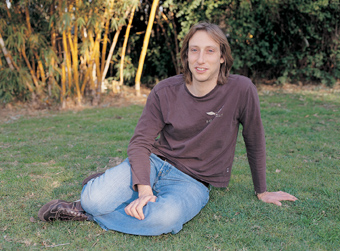If classical physics called the tune, particles would become as still and silent as statues when the temperature reached absolute zero; but these particles actually continue to dance to the music of quantum mechanics, down to the very lowest degree. Is it possible to detect the hum of this so-called zero-point motion?
Advances in technology have facilitated the cooling of large collections of atoms to the dazzlingly low temperature of only one billionth of a degree above absolute zero – even colder than the outer limits of the universe. This breakthrough led to the observation of a new kind of quantum matter: the Bose-Einstein Condensate (BEC). Recently, Dr. Ehud Altman of the Weizmann Institute’s Condensed Matter Physics Department, in collaboration with Prof. Eugene Demler of Harvard University and Prof. Anatoli Polkovnikov of Boston University, USA, developed a novel idea: Experiments with ultracold atoms could serve as a means to directly observe the quantum fluctuations inside matter and detect new phases of that matter.
A BEC contains an enormous number of non-interacting atoms that, at very low temperatures, start to behave less like particles and more like waves. Each atomic wave starts to overlap with that of its neighbor, and they go through a sort of collective quantum “identity crisis,” losing their individuality to join in one big wave. When two separate BECs are allowed to expand and overlap each other, a striped pattern emerges in the gas cloud. This phenomenon – like overlapping ripples when two stones are thrown into a pond – is a direct testament to the wave nature of quantum particles. A BEC in which the waves “dance in unison” is said to be a very orderly state of matter. (In physicists’ language: The phase of the waves is not fluctuating.) Thanks to this property, the interference pattern is so incredibly sharp that the exact shape of the stripes is reproducible from one experiment to the next.
But what happens in a system in which the interactions between particles become increasingly important? This occurs, for example, when the particles can move in only a single line or a two-dimensional plane. The waves associated with different particles become entangled with one another, resulting in quantum fluctuations that disrupt the stately “dance in unison,” turning it into more of a frenetic jitterbug. In recent work published in the Proceedings of the National Academy of Sciences (PNAS), USA, Altman and his colleagues explained that these fluctuations should be observable in the interference patterns in one- or two-dimensional condensates. The stripes appearing in the interference patterns will exhibit twists and wiggles that change from one experiment to the next. Like the discordant vibrations of badly tuned guitar strings, these wiggles appear to be noise. Altman and his colleagues showed however, that they have some interesting statistical properties and thus are not noise at all, but the footprints left by quantum fluctuations. The team calculated the properties of these wiggles and explained how they could enable experimentalists to directly observe the workings of quantum mechanics in matter. Indeed, the theory developed by Altman and his collaborators has successfully been applied experimentally by a group from ENS, Paris, who observed, for the first time, an elusive phase transition in a system of ultracold atoms.
In another paper, published recently in Nature Physics, Altman and his colleagues investigated in greater detail the random fluctuations in the sharpness of the interference pattern. They showed that the fluctuations follow a remarkable probability distribution – one that usually describes rare but catastrophic events, such as stock market crashes and earthquakes.
These findings have practical value: They could facilitate the development of measurement devices that would be able to measure very slight changes in the gravitational field by tracking phase changes between two BECs. These could be used, for example, in mapping geological layers in search of oil, or as gravity wave detectors for cosmological experiments.
Dr. Ehud Altman’s research is supported by the Asher and Jeannette Alhadeff Research Award.

Crowd Behavior
Transitions between different forms of organization in matter are often driven by changes in temperature, which is a measure of the random motion of atoms inside the material. Take water, for example: As we lower the temperature, the particles slow down until they organize into the crystal structure we know as ice. When temperatures fall to near absolute zero, we might imagine that matter comes to a complete standstill, cutting short opportunities for change. But in this extreme deep freeze, the quantum mechanical nature of the particles comes into play. Quantum fluctuations – a consequence of quantum uncertainty, the principle stating that it is impossible to know the exact position of an atom and its speed simultaneously – open up possibilities for matter to organize in dramatically new and unforeseen ways.
Under the laws of quantum mechanics, the motion and behavior of single particles, strange as they may appear to us, are by now well understood. But how do quantum mechanical principles such as particle-wave duality and the uncertainty principle affect the collective behavior of the hordes of interacting particles that make up matter? This question, which Altman addresses in his research, is one of the more significant challenges facing physics today.

